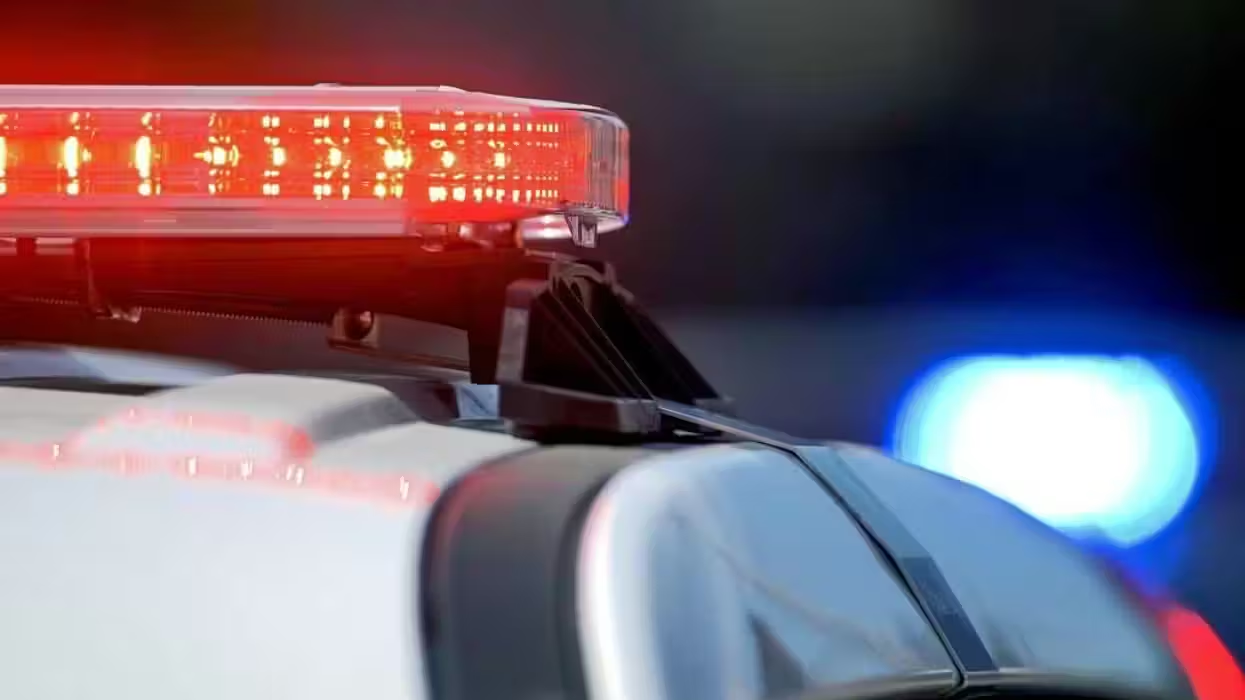
© 2025 Blaze Media LLC. All rights reserved.
Why TSA Is Letting More People Into the Line Where They Can Keep on Their Shoes, Belt
September 08, 2014
"Defeats the purpose entirely."
Standing in a lengthy airport security line, you might notice a significant number of people being ushered into the TSA's PreCheck lane. Perhaps you've even been one of them even though you weren't formally qualified by the Transportation Security Administration's program.
 Travelers walk past a newly-opened TSA PreCheck application center at Terminal C of the LaGuardia Airport earlier this year. (John Moore/Getty Images)
Travelers walk past a newly-opened TSA PreCheck application center at Terminal C of the LaGuardia Airport earlier this year. (John Moore/Getty Images)
The practice of TSA allowing passengers to flow through the supposedly faster PreCheck line where they can keep their shoes on and leave laptops in their bags isn't entirely new, but as more people are funneled into this line, some who fly under elite status with airlines or submitted their fingerprints and paid $85 to apply for PreCheck are upset. Others are suggesting it could pose a "security issue."
"I was on the road 147 nights last year, and am on pace to exceed that this year, so when Global Entry and TSA PreCheck was announced, I was excited," Scott Long, a publisher, told TheBlaze in an email. "I timed it one time — it took me six seconds from the TSA agent checking my ID to me picking up my bag on the other side of the X-ray machine."
But more recently Long said he's had a different experience.
"I see more and more people being directed into PreCheck lines who don't understand the system. While TSA agents do a good job of trying to explain it to these travelers, it's almost always met with disbelief from those passengers, who ask them to confirm that they don't have to take their shoes off or their liquids out, and it grinds the PreCheck line to a halt."
Beauty consultant Wendy Lewis also told TheBlaze that she finds passengers who are not formally qualified through the PreCheck program clogging up what should be a faster lane for those who paid for it.
"I find that this system is quite random and in many cases, I don't even bother because the line is not so much shorter," she said. "I have also found that there are an awful lot of people selected as PreCheck at every checkpoint, which defeats the purpose entirely."
Overall, she said TSA's program, which is inconsistent among airports, has caused business travelers to become "disgusted with the entire TSA process and frustrated that there is little that can be done in terms of improvement, except a major overhaul of the entire system."
TSA spokesman Ross Feinstein told TheBlaze in an emailed statement that the agency is directing "eligible passengers" into PreCheck lines to "improve the screening process."
 A traveler (R), sits for an interview while enrolling at a newly-opened TSA Pre-check application center. Once approved for the program, travelers can use special expidited PreCheck security lanes. More recently though, passengers who have not formally applied for the program and who might not be elite airline travelers are being passed into this line. (John Moore/Getty Images)
A traveler (R), sits for an interview while enrolling at a newly-opened TSA Pre-check application center. Once approved for the program, travelers can use special expidited PreCheck security lanes. More recently though, passengers who have not formally applied for the program and who might not be elite airline travelers are being passed into this line. (John Moore/Getty Images)
Feinstein described this as part of TSA's "Managed Inclusion" process, which involves "a risk-based approach, combines the use of multiple layers of security to indirectly conduct a real-time assessment of passengers at select airports."
Overall, putting more people through PreCheck "improves security, efficiency and the passenger experience," Feinstein told TheBlaze.
Watch this TSA video about "managed inclusion":
TSA's details about "managed inclusion" have been called "murky," and TheBlaze wasn't able to find out much more about what allows a regular traveler to be chosen for PreCheck.
When asked more pointedly about what might make a passenger "eligible" to be placed into this line, Feinstein simply referred to TSA's webpage about the process. The website explains how passengers are evaluated by trained canines and "Behavior Detection Officers" as they move through the checkpoint area."
Feinstein recently told USA Today that the agency is hoping to drum up interest and expand its PreCheck program. Yahoo's tech editor David Pogue wrote on the site's travel blog that TSA wants to have 50 percent of all travelers in PreCheck lanes by the end of 2014.
This is what I saw happening myself on a recent trip out of Dulles International Airport in Virginia just outside of D.C. When heading out of town for the Labor Day weekend, I was among the roughly 50 percent of passengers who were being turned toward the TSA PreCheck line. This line was just as crowded as the one where passengers would be put through the rigmarole of removing their shoes, laptops and liquids, before they stepped into scanner with their hands above their heads.
I, like many of the frequent travelers who've recounted similar situations to me, witnessed people who failed to listen to the agents' instructions and started to take out their laptops or removed their belts, slowing down the process. Everyone in this line then walked through a traditional metal detector — no hand raising necessary. It was just like the old days of airport security.
The Points Guy, Brian Kelly, wrote last year that the TSA PreCheck line could be the new "slow lane," depending on the airport. Kelly called it "disturbing" and a possible "security issue" that non-TSA PreCheck travelers are being put through these lines.
"Quite honestly, I love TSA PreCheck but it should be reserved for the most frequent [fliers] and those who pay for it," Adam Rodriguez, a travel blogger for the site Fly2Travel, told TheBlaze. "Why? Because it proves to be used by those who are the most competent [fliers](and airport go-ers) and those [fliers] are aware of the programs intended results. It helps keep busy travelers relaxed when they most need it. TSA security lines are usually long, dreadful and a nuisance — though required for the safety of the nation."
Want to leave a tip?
We answer to you. Help keep our content free of advertisers and big tech censorship by leaving a tip today.
Want to join the conversation?
Already a subscriber?
more stories
Sign up for the Blaze newsletter
By signing up, you agree to our Privacy Policy and Terms of Use, and agree to receive content that may sometimes include advertisements. You may opt out at any time.
Related Content
© 2025 Blaze Media LLC. All rights reserved.
Get the stories that matter most delivered directly to your inbox.
By signing up, you agree to our Privacy Policy and Terms of Use, and agree to receive content that may sometimes include advertisements. You may opt out at any time.






